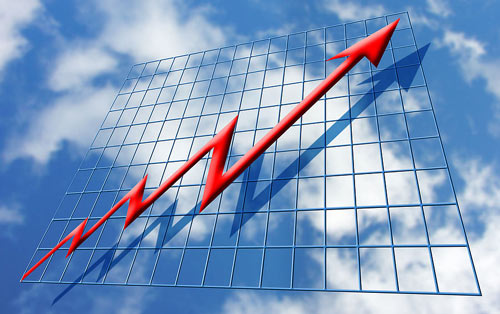 Financial growth from Bigstock
Financial growth from Bigstock
Why has the dollar been so strong? A number of reasons. Our economy has been strengthening, especially relative to the economies of
How does a strong dollar affect the world's economies? A stronger dollar has been a lifeline for struggling economies in
What does the super buck mean for U.S. investors? Over the long haul, not much. The direction of the dollar isn't a reliable predictor of stock prices in itself. For example, stock prices and the value of the dollar rose simultaneously between 1980 and 1985, but moved in opposite directions from 1985 to 1987. From 1995 to 2001, both were on the upswing, but from 2001 to 2008, the dollar sank and stocks rose. Since 2011, the dollar and stocks have risen in tandem. At the sector level, though, a rising dollar seems to favor stocks of companies that depend on consumer spending on non-necessities (think retailers and restaurants) and financial firms, while energy companies thrive when the currency is weak.
Then why has dollar news been roiling the U.S. stock market? Investors worry about the hit to the earnings of U.S. exporters and multinationals. A strong greenback hurts firms with foreign operations because sales and profits generated abroad translate into fewer dollars. Overall, firms in Standard & Poor's 500-stock index derive 46% of sales overseas; for energy and materials companies, it's a bit more than that. Technology firms depend on foreign sales for 56% of revenues. In January, analysts expected that earnings for tech companies would rise more than 10% in 2015; forecasts now call for growth of just 6%. Firms warning that the stronger dollar will hurt 2015 results range from
How much more can the dollar appreciate? Most of the move has been made. In fact, some analysts think the dollar has already peaked. For the dollar and euro to be at parity--that is,
Comment by clicking here.
Anne Kates Smith is a Senior Editor at Kiplinger's Personal Finance.



 Contact The Editor
Contact The Editor
 Articles By This Author
Articles By This Author